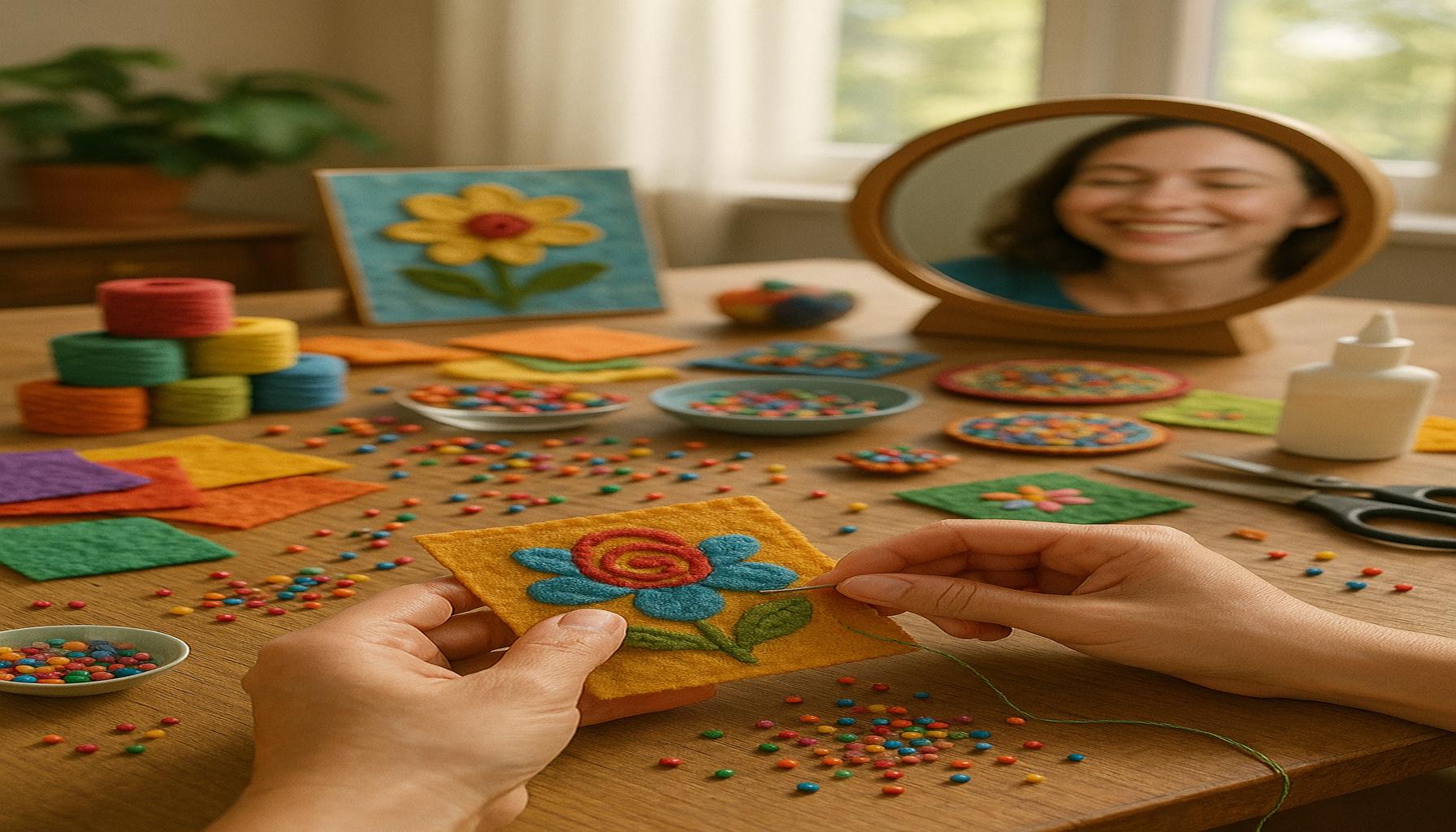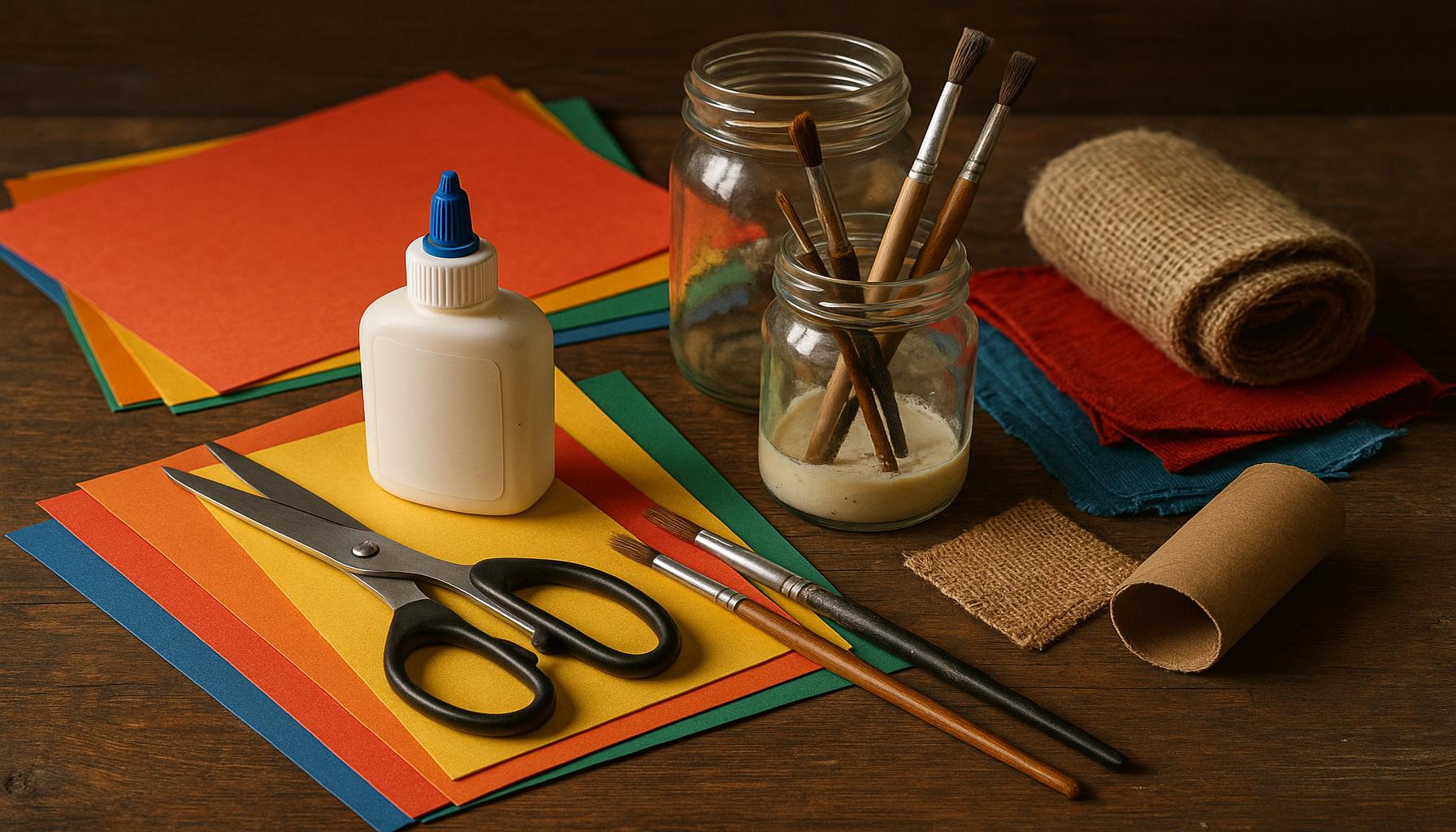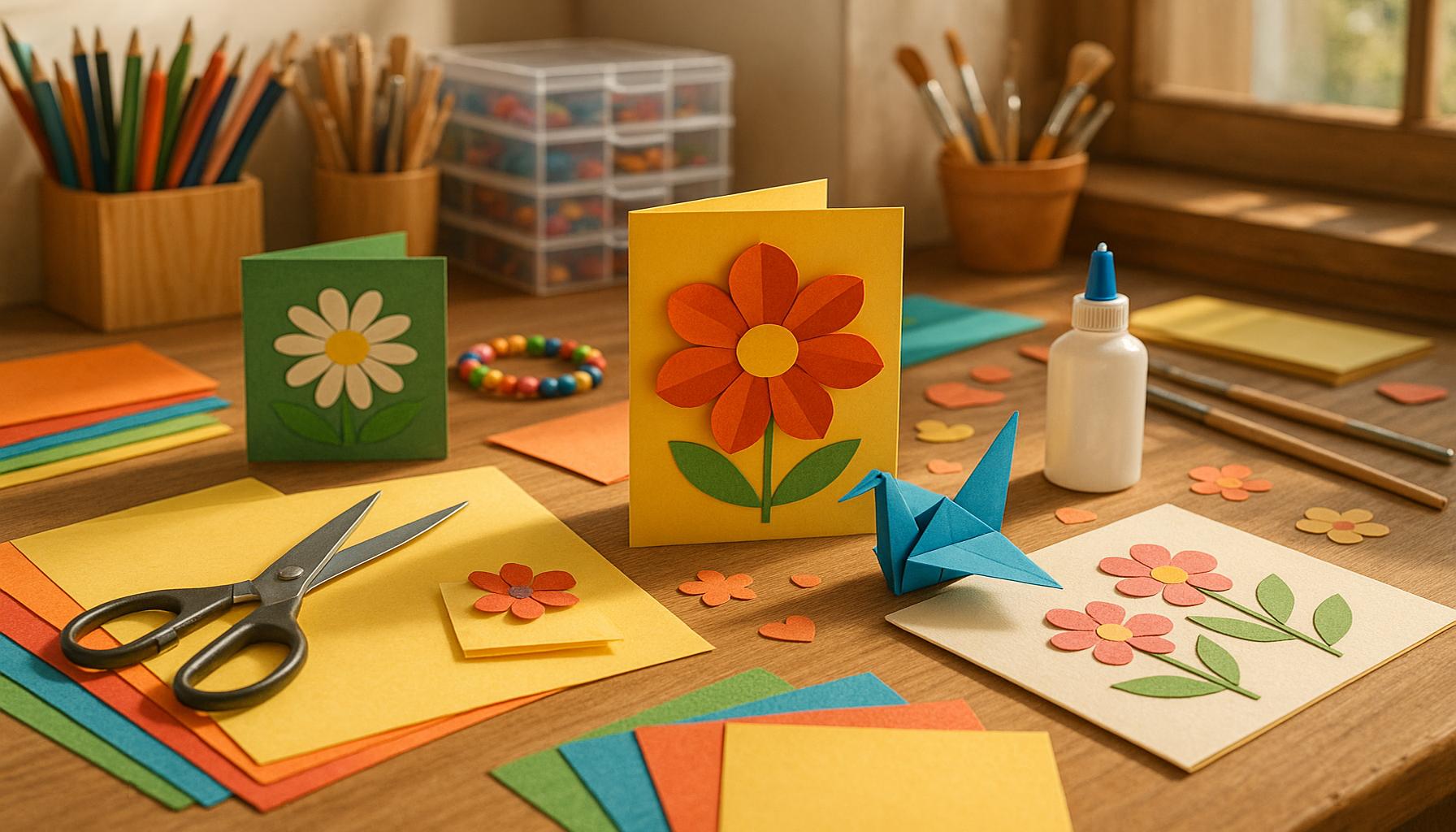The Evolution of Crafting: How Handmade Traditions Are Transforming into Modern Art
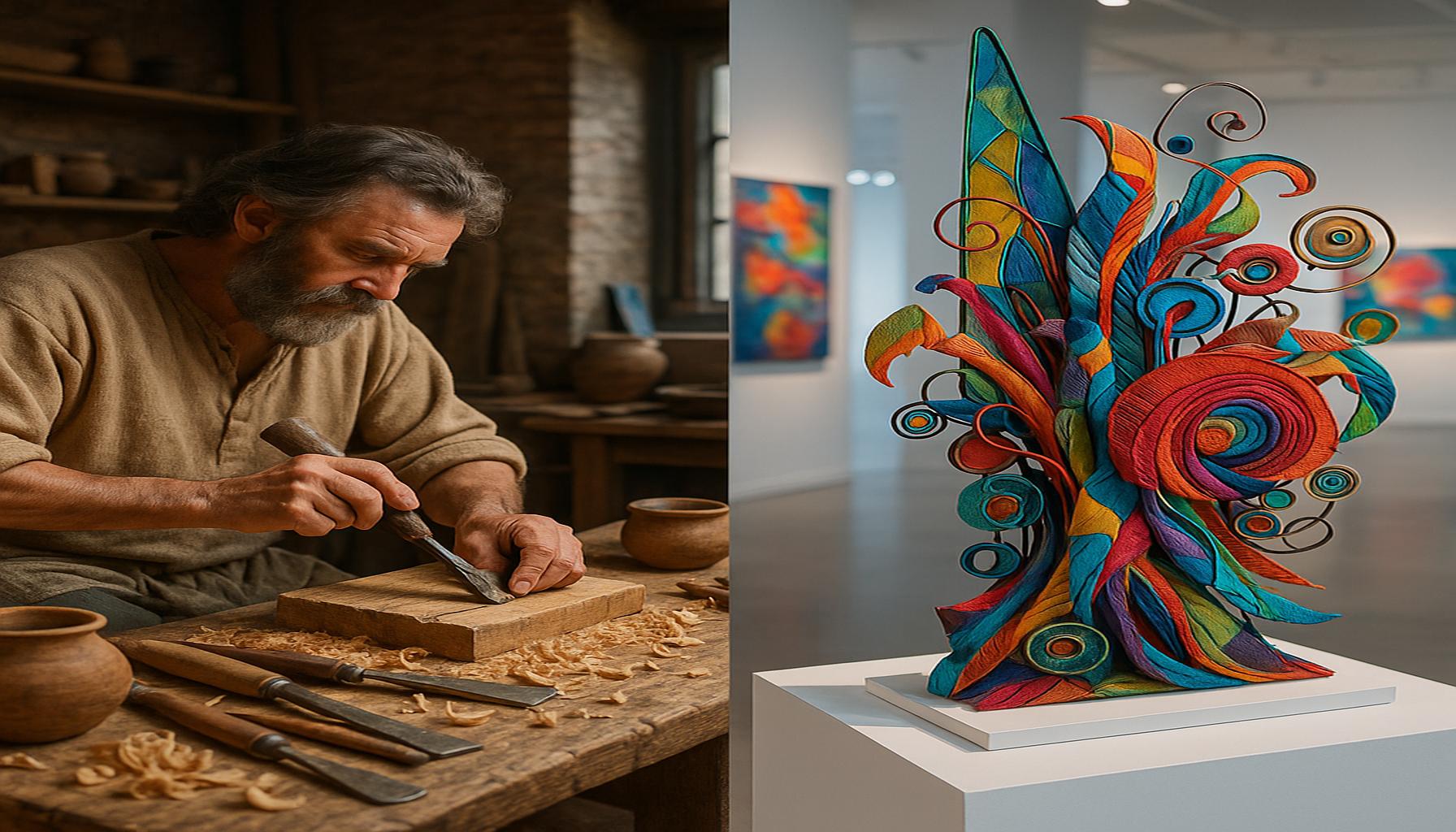
The Transformation of Crafting in Today’s World
The world of crafting is undergoing a remarkable transformation. Handmade traditions that have been passed down through generations are now evolving into forms of modern art, captivating audiences and redefining artistic boundaries. This intriguing intersection of old and new raises questions about the identity of craftsmanship in a fast-paced modern environment. As traditional techniques are reimagined, a rich tapestry of artistic expression unfolds.
One of the most striking characteristics of this evolution is innovation. Today’s artisans are not shying away from technology. Instead, they embrace it, creating pieces that marry traditional skills with contemporary tools. For instance, a potter might use a 3D printer to create intricate designs, followed by hand crafting to finish the piece, blending digital precision with the warmth of handmade art. Artisans like Jonathan Keep have pioneered this synthesis, exploring how digital techniques can enhance pottery, thus pushing the boundaries of what is possible in the craft.
The second defining feature of this movement is inclusivity. As craft practices become enriched by a tapestry of diverse cultural influences, they reflect a wider range of voices and experiences. Artisans from various backgrounds are bringing their unique perspectives into the crafting community, fostering an environment that values representation and collaboration. This inclusivity leads to innovative approaches, such as the incorporation of Indigenous patterns in contemporary textile art, connecting modern consumers to historical narratives often overlooked.
Sustainability has also emerged as a crucial pillar within contemporary crafting. Many creators prioritize eco-friendly materials and ethical practices, which resonate with modern societal values. For example, numerous artisans are utilizing upcycled materials or employing natural dyes, creating beautiful pieces that are not only aesthetically appealing but also environmentally conscious. Brands like Reformation in fashion and local artisan markets across the U.S. exemplify this movement, attracting consumers eager to support sustainable practices.
This revitalization invites not only artists but also enthusiasts to explore the depth of craftsmanship. The narrative of crafting today is interwoven with a sense of community and a quest for individuality, making it relevant for contemporary audiences. Crafting workshops, community art events, and social media platforms celebrate this dialogue between tradition and modernity, allowing enthusiasts to connect, share, and learn.
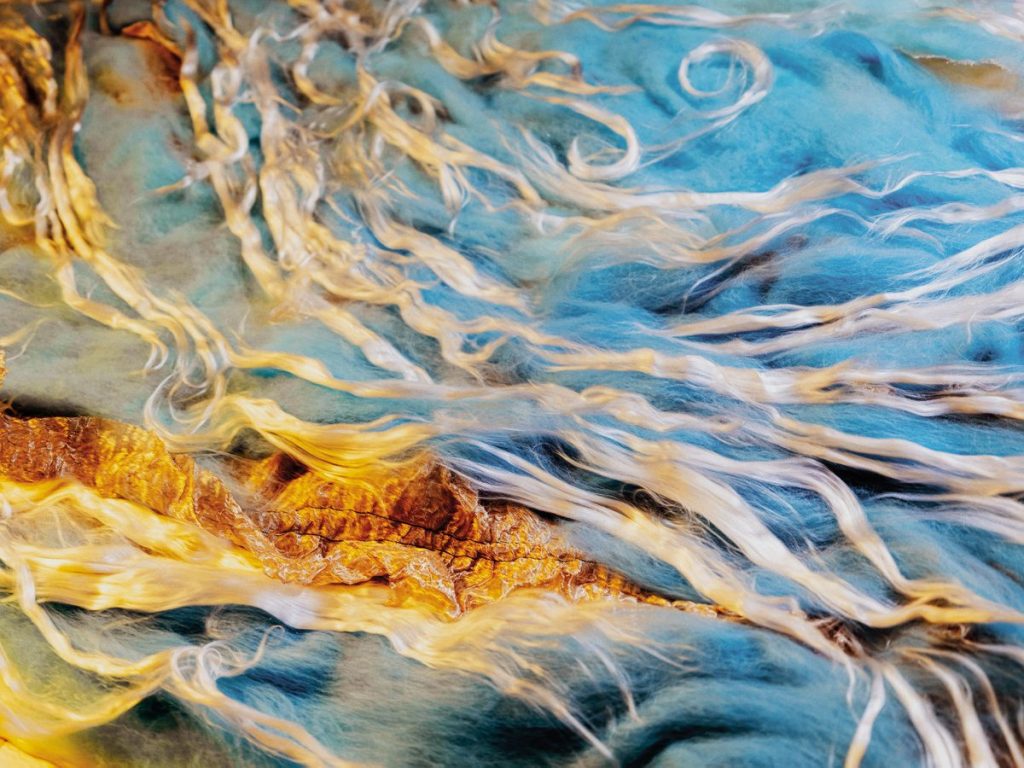
As we continue to explore how these handmade traditions shape the realm of modern art, it becomes evident that they matter more than ever in today’s society. This connection to history not only enriches our understanding but also shapes the future of crafting. Prepare to unravel the threads that connect the past with today’s artistic expressions and discover how this vibrant community continues to evolve. Each crafted piece tells a story, merging the wisdom of the past with the creativity of the present.
DIVE DEEPER: Click here to discover eco-friendly gardening tips
Reimagining the Craft: Blending Tradition with Innovation
As the landscape of crafting transforms, the integration of new technologies offers an exciting frontier. This blend of ancient techniques and modern innovations is redefining what it means to create. Artisans of today are increasingly recognizing the potential of digital tools—from laser cutters to augmented reality—as means to enhance their craftsmanship while preserving the essence of traditional methods. These techniques allow for unprecedented precision, enabling creators to explore intricate designs and patterns that would have been nearly impossible to achieve by hand alone.
For example, within the realm of glassblowing, artisans are utilizing computer-aided design software to generate unique shapes that break conventional molds. By fusing techniques with high-tech solutions, artisans like Josh Simpson, known for his planetary glass sculptures, illustrate how technology can enhance rather than overshadow the artistry involved. His work emphasizes the blending of visual aesthetics with attention to detail, creating pieces that speak to both modern sensibilities and traditional practices.
Cultural Influences and Artistic Narratives
Alongside technological advancements, cultural influences play a critical role in the contemporary crafting narrative. The rich history of global crafting traditions—from Japanese pottery to Indian textiles—inspires modern artists who seek to weave these influences into their work. This cross-pollination of cultures not only enriches individual artistry but also fosters a deeper understanding of shared human experiences.
For instance, many artisans incorporate elements of their heritage in contemporary works, leading to a dynamic fusion of styles that captures the essence of globalization. Here are some notable trends reflecting this cultural shift:
- Indigenous Artistry: Incorporating traditional Indigenous patterns and techniques, contemporary creators are reawakening old narratives that engage with modern audiences.
- Global Fusion: Artists are blending techniques and aesthetics from various cultures, resulting in hybrid works that celebrate diversity, such as combining African beadwork with European textile techniques.
- Local Narratives: Many artisans look to their immediate environment for inspiration, merging local histories and materials into their works, fostering a deeper connection with their communities.
This embrace of cultural narratives underscores the relevance of crafting in contemporary society, where personal identity and artistic expression intersect. As these diverse voices express their stories through artistry, the crafting landscape expands beyond individuality, challenging societal norms and sparking meaningful conversations.
In the next sections, we will delve further into how sustainability and community engagement are shaping the future of crafting, providing relevant examples of artisans across the United States who are at the forefront of this movement. Staying attuned to these developments not only stimulates curiosity but also enhances appreciation for the intricate and evolving world of craftsmanship.
| Crafting Styles | Modern Interpretations |
|---|---|
| Traditional Techniques | Artists are now integrating age-old methods like pottery, weaving, and woodworking into their contemporary designs, fostering a fusion of past and present. |
| Cultural Heritage | Modern artisans are emphasizing cultural narratives, reinterpreting stories through materials and forms, which enlightens audiences about the significance of these handmade traditions. |
The evolution of crafting has seen a remarkable blend of both traditional techniques and modern interpretations. For instance, the techniques that have been handed down for generations are not simply being replicated; they are being innovated. Many artists today find inspiration in traditional patterns and crafts, redefining them to resonate with contemporary art scenes. This trend not only preserves the essence of these crafts but also allows them to be appreciated within the context of modern aesthetics.Furthermore, by weaving cultural heritage into contemporary pieces, artists create a dialogue between the past and the present. This revival draws attention to the importance of artisanal skills and their role in modern society. Consumers are increasingly valuing unique, handmade items over mass-produced ones, leading to a resurgence in the appreciation of craftsmanship. This transformation is reshaping how we view art and craft, making the narrative behind each piece just as compelling as the artwork itself.
DIVE DEEPER: Click here to unlock your creative potential
The Role of Sustainability in Modern Crafting
As the intersection of handmade traditions and modern art continues to evolve, the emphasis on sustainability has emerged as a defining feature of contemporary craftsmanship. In a world increasingly aware of environmental impacts, artisans are reimagining their practices to minimize waste and promote eco-friendly materials. This focus not only preserves traditional methods but also aligns with the values of modern consumers who prioritize sustainability in their purchasing decisions.
Many artisans are turning to recycled materials as a primary resource, transforming what was once considered waste into stunning works of art. For instance, artists like Elena Colombo create intricate jewelry from repurposed metals and old electronic components, producing pieces that are not only visually striking but also environmentally responsible. Each item tells a story, reflecting a commitment to sustainability while celebrating the beauty of reclamation.
Community Engagement and Collaborative Crafting
Another notable dimension of the evolution of crafting is the rise of community engagement. Artisans are increasingly collaborating with local communities to foster cultural exchange and knowledge sharing. This collaborative spirit not only strengthens bonds within the community but also serves as a means of preserving traditional techniques that might otherwise fade away.
Programs like Craft in America showcase the importance of artisans working together to revitalize local practices. By hosting workshops and bringing in different artisans, these initiatives create a platform for mentorship and collective learning. For example, indigenous artists partner with contemporary creators to teach traditional weaving techniques, embedding a sense of history and heritage into modern artistic expressions.
This emphasis on community is evident in events such as craft fairs and artisan markets, which thrive across the United States. These gatherings provide craftsmen and women with the opportunity to showcase their work while connecting with audiences who appreciate the unique and personal touch that handmade items offer. Beyond merely selling their products, artisans are sharing stories and skills, making each purchase a connection to a greater narrative.
Women and the Crafting Renaissance
Women are playing a pivotal role in the resurgence of crafting as an art form. In recent years, female artisans have risen to prominence in various disciplines, transforming not only the market but also the perception of what it means to be a craftsperson. From quilting to pottery, women are reclaiming traditional skills and infusing them with new meaning and perspectives.
This feminization of crafting is significant in the context of empowerment and entrepreneurship. Many women are utilizing their crafting skills to start their own businesses, using platforms like Etsy and social media to reach broader audiences. Through these platforms, they build networks and communities that encourage one another, helping to create a vibrant ecosystem of support and growth within the craft. The success of female artisans reflects a growing appreciation for handmade objects and the stories behind them, heralding a new era in the crafting world.
As styles evolve and more artisans engage with their communities, the landscape of crafting continues to expand. Sustainability, collaboration, and empowerment are shaping a future where handmade traditions not only endure but flourish as a dynamic art form. This ongoing transformation speaks to the inherent value of craftsmanship as both a personal and cultural expression, reminding us of the intricate ties that bind us across generations.
DISCOVER MORE: Click here to learn about eco-friendly gardening
Conclusion: Embracing the Future of Crafting
The evolution of crafting embodies a rich tapestry of handmade traditions interwoven with modern artistic expressions. As artisans rediscover the value of their heritage, they are not only revitalizing age-old techniques but are also incorporating sustainability and community engagement into their practices. This shift towards eco-consciousness showcases a remarkable alignment between artistry and responsibility, making craftsmanship a pivotal player in the dialogue about environmental stewardship.
Moreover, the collaborative spirit ignited within local communities fosters a deeper connection to the craft. Workshops and art fairs serve as vibrant platforms for sharing skills, knowledge, and narratives, breathing new life into the notion of what it means to be a creator in today’s world. The increasing prominence of female artisans adds another layer of richness to this narrative, symbolizing empowerment and entrepreneurial spirit. These dynamic individuals are transforming perceptions of craftsmanship while capturing the essence of diversity and innovation.
As we look to the future, the intersection of traditional and modern crafting is bound to flourish in unprecedented ways. By embracing sustainability, promoting collaboration, and supporting emerging voices, we can ensure that the legacy of crafting not only endures but evolves into a powerful form of modern art. This transformation is more than just an aesthetic shift; it is a cultural renaissance that invites all of us to appreciate the stories behind handmade creations and to reflect on how these creations enrich our lives and communities.
